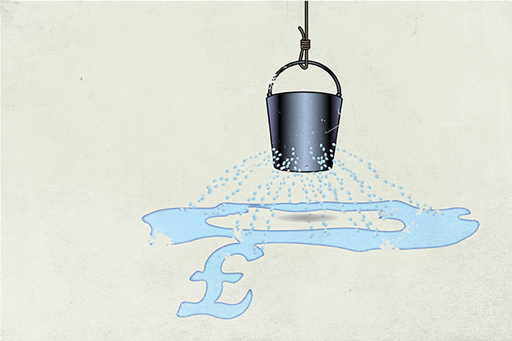5.2.3 Personal pensions
Personal pensions and defined contribution occupational schemes are examples of defined contribution schemes, and all work in essentially the same way. The pension depends on:
- the amount paid in, which is invested in a pension pot
- how much the invested pension pot increases in value
- how much is taken out of the pension pot in charges
- how much the saver decides to draw out as a cash lump sum at retirement
- how much pension the remaining pot can buy at retirement (most commonly the pot is used to buy an annuity, but an alternative is income drawdown).
Anyone can have a personal pension and anyone can pay into a personal pension for someone else – so the main earner in a couple could pay into a plan for a partner who has a caring role.
Personal pensions (unlike occupational defined contribution schemes) do not necessarily offer a package of benefits. It‘s up to the individual to choose whether to buy extra benefits, such as life cover, a pension for a partner or increases to the pension once it starts to be paid.
Personal pensions and occupational defined contribution schemes expose the individual to a variety of risks. To understand these risks, put yourself into the position of someone who is currently many years from retirement, and who has to organise their own pension scheme to provide themselves with retirement income.
How much should you pay into the scheme? It’s important to get this decision right because if you pay in too little, your pension will be too small. Pay in too much, and you could limit your current spending and standard of living, but you can’t be certain of the correct amount. The eventual cost of the pension will depend on these factors:
- Investment returns: as you have seen earlier in the course, when investing for the long term – and pension savings are very long term – stock market investments, like shares and bonds, are likely to be most suitable. It’s impossible to know in advance how well these investments will perform. If, in planning for retirement, you assume they will perform well, you don’t need to invest too much. If your assumption is wrong and the investments turn out badly, you’ll have too little in your pot to provide the pension you wanted. What counts here is the investment return after all the charges have been deducted. An investment fund that offers the chance of higher returns but has high charges might be a poor choice compared with a less ambitious investment fund with modest charges.
- Inflation: Rising prices reduces the buying power of money. To protect against this, you would need to invest extra money to compensate for the effect of inflation, both over the years when the savings are building up and once the pension starts. But you’ll also have to estimate what rate of inflation to guard against. If your estimate is too low, in real terms you’ll have a smaller pension than planned.
- Longevity: the aim is that the pension, when it starts, will provide a regular income, usually paid monthly, until your death. The longer you live, the more months of pension that have to be paid out, and the greater the total cost of the pension. In deciding how much to save, you need to make an assumption about how long you will live or the cost of insuring against living ‘too long’. If your assumption is wrong, either the money will run out before you die or you’ll have saved more than you needed to.
Therefore, defined contribution schemes, including personal pensions, lead to individuals shouldering the risks up to the time when the pension starts. This means that different people saving the same amount can receive very different pensions, and a person’s pension can be markedly different depending on when they retire.
On reaching retirement, you can protect yourself from further longevity risk by buying an annuity that will provide an income for the whole of your remaining life, however long you live. In effect, this is insurance against living for longer than your pension pot would otherwise last. However, the annuity provider will take a slice of the pension pot in charges before what remains is turned into income.
A revolution to defined contribution schemes, however, was presaged in the 2014 budget statement by the Chancellor George Osborne. From April 2015, those retiring have had access to a wider range of alternatives to buying an annuity with their pension ‘pots’.
Additionally, those aged 55 and over can cash in all or part of their pension savings prior to retirement, with 25% of each lump sum drawn out being tax free. After retirement, withdrawals will be taxed as income. So those approaching retirement now have greater flexibility to choose where to invest their pension savings to provide for an income in the future or other purposes.

